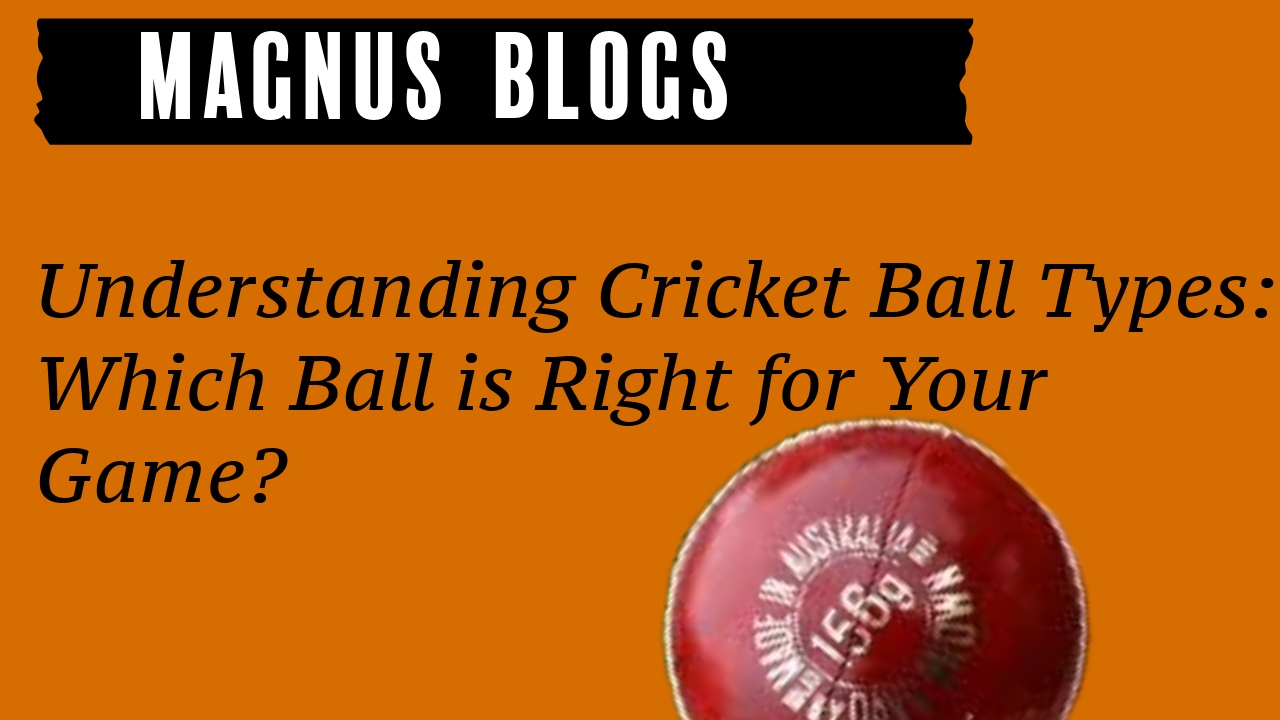Cricket balls come in various types, each designed for specific playing conditions, formats, and skill levels. Whether you're a beginner practicing in the backyard or a seasoned player competing at a professional level, choosing the right ball is crucial for improving your game and enhancing your playing experience. Let’s explore the different cricket ball types, their sizes, and which one is best for your needs.
1. Leather Cricket Balls: The Standard for Competitive Play
Leather cricket balls are the most commonly used in professional and competitive matches. Made with a cork core and a leather exterior, these balls are known for their durability, swing, and seam performance.
- Red Leather Balls: Used in Test cricket and longer formats, red balls are durable and maintain their seam over extended periods.
- White Leather Balls: Designed for limited-overs formats like ODIs and T20s, white balls are more visible under floodlights but tend to wear faster than red balls.
- Pink Leather Balls: Specifically used for day-night Test matches, pink balls offer visibility in mixed lighting conditions.
Best For: Advanced players, league matches, and competitive games.
Keywords: Leather cricket balls, red vs. white cricket balls, buy cricket balls USA.
2. Synthetic Cricket Balls: Affordable and Low Maintenance
Synthetic cricket balls are made from durable synthetic materials, making them a cost-effective option for practice and recreational play. They are weather-resistant and require less maintenance compared to leather balls.
- Advantages: Long-lasting, suitable for wet conditions, and ideal for casual games.
- Disadvantages: Less swing and seam action than leather balls.
Best For: Beginners, practice sessions, and casual matches.
Keywords: Synthetic cricket balls, Magnus Cricket balls, cricket practice balls.
3. Tennis Cricket Balls: Soft and Lightweight
Tennis cricket balls are soft, lightweight, and covered in felt, making them perfect for casual and friendly games. These balls are often used in tennis-ball cricket, a popular variation of the sport.
- Advantages: Safe for kids, suitable for backyard or street cricket, and ideal for non-professionals.
- Hard Tennis Balls: Slightly heavier than regular tennis balls, offering more bounce and closer performance to traditional cricket balls.
Best For: Recreational players, kids, and informal matches.
Keywords: Tennis cricket balls, backyard cricket balls, Magnus Cricket USA.
4. Rubber Cricket Balls: Durable and Versatile
Rubber cricket balls are another alternative for casual and practice games. They are heavier than tennis balls but softer than leather balls, providing a middle ground for safety and performance.
- Advantages: Suitable for all-weather play, durable, and safer for younger players.
- Disadvantages: Limited seam and swing action.
Best For: Youth players, beginners, and practice sessions.
Keywords: Rubber cricket balls, Magnus Cricket training balls, buy cricket balls USA.
5. Cricket Ball Sizes: Adult vs. Junior
Cricket balls come in different sizes and weights to accommodate players of various ages and skill levels:
- Men’s Standard: Weighs between 155.9g and 163g, with a circumference of 22.4cm to 22.9cm.
- Women’s Standard: Slightly smaller and lighter, weighing 140g to 151g.
- Youth/Junior Balls: Weigh between 133g and 144g, ideal for players under 13 years old.
Tip: Ensure the ball size matches the player’s age group to improve skill development and safety.
6. Choosing the Right Ball for Your Game
For Competitive Matches:
- Use high-quality leather balls (red, white, or pink) for league and tournament play.
For Practice and Training:
- Opt for synthetic or rubber balls to reduce costs and maintain longevity.
For Recreational Play:
- Tennis or rubber balls are ideal for safety and ease of use.
For Youth Players:
- Choose smaller, lightweight balls to help young players build confidence and skills.
Conclusion
Understanding the differences between cricket ball types is essential for selecting the right one for your game. From leather balls for professionals to tennis and rubber balls for casual play, each type has its unique benefits and purpose. At Magnus Cricket, we offer a wide range of cricket balls to suit every need and level of play. Explore our collection today and find the perfect ball for your game!
